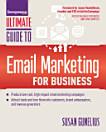關於這本電子書
- Gauti Sigthorsson, Greenwich University
"There could be no better guides to the conceptual map of the creative industries than John Hartley and his colleagues, pioneers in the field. This book is a clear, comprehensive and accessible tool-kit of ideas, concepts, questions and discussions which will be invaluable to students and practitioners alike. Key Concepts in Creative Industries is set to become the corner stone of an expanding and exciting field of study"
- Chris Barker, University of Wollongong
Creativity is an attribute of individual people, but also a feature of organizations like firms, cultural institutions and social networks. In the knowledge economy of today, creativity is of increasing value, for developing, emergent and advanced countries, and for competing cities.
This book is the first to present an organized study of the key concepts that underlie and motivate the field of creative industries. Written by a world-leading team of experts, it presents readers with compact accounts of the history of terms, the debates and tensions associated with their usage, and examples of how they apply to the creative industries around the world.
Crisp and relevant, this is an invaluable text for students of the creative industries across a range of disciplines, especially media, communication, economics, sociology, creative and performing arts and regional studies.
關於作者
John Hartley, AM (Order of Australia), is John Curtin Distinguished Professor at Curtin University Australia, and Professor of Journalism, Media and Cultural Studies at Cardiff University Wales. Recent books include: Cultural Science: A Natural History of Stories, Demes, Knowledge and Innovation (with Jason Potts, Bloomsbury, 2014); Key Concepts in Creative Industries (co-authored, SAGE, 2013); A Companion to New Media Dynamics (co-edited, Wiley-Blackwell, 2013); and Digital Futures for Cultural and Media Studies (Wiley-Blackwell, 2012). He is editor of the International Journal of Cultural Studies (SAGE) and publisher of Cultural Science Journal (online). He is a Fellow of the Australian Academy of Humanities and the International Communication Association, Honorary Professor of Zhejiang University of Media and Communications (Hangzhou), and Guest Researcher, Institute for Cultural Industries, Shenzhen University, China.
Jason Potts is Professor of Economics at RMIT University, Australia.
Stuart Cunningham is Distinguished Professor in the Faculty of Creative Industries at Queensland University of Technology, Australia.
Terry Flew is Professor of Media and Communications in the Creative Industries Faculty at the Queensland University of Technology, Brisbane, Australia. He has been seconded from QUT to act as a Commissioner of the Australian Law Reform Commission from May 2011 to February 2012, chairing the Inquiry into the National Classification Scheme in Australia.
Professor Michael Keane is Professor of Chinese Media and Cultural Studies at Curtin University, Perth.
John Banks is Associate Professor of the Creative Industries Faculty at Queensland University of Technology, Australia.







